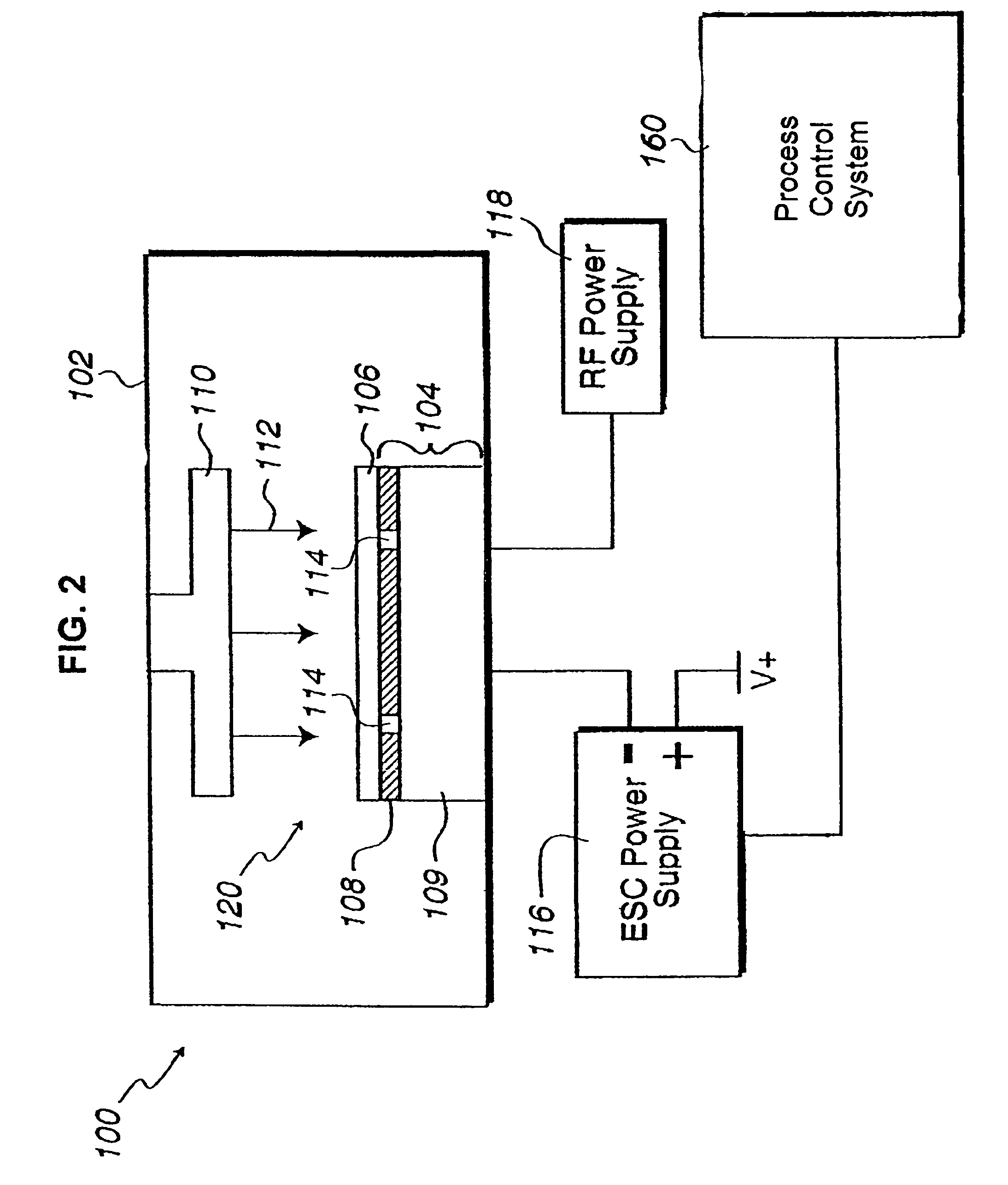In situ monitoring of wafer charge distribution in plasma processing
a plasma processing and charge distribution technology, applied in the manufacture of semiconductor/solid-state devices, basic electric elements, electric apparatus, etc., can solve the problems of difficult to remove the wafer from the chuck, unsatisfactory electric field and clamping force, and field emission tunneling across the interface gap
- Summary
- Abstract
- Description
- Claims
- Application Information
AI Technical Summary
Benefits of technology
Problems solved by technology
Method used
Image
Examples
Embodiment Construction
[0032]The present invention relates to the manufacture of semiconductor devices. More specifically, the present invention relates to methods and apparatuses for electrostatically clamping and declamping a semiconductor wafer on an electrostatic chuck (ESC) in a processing chamber of a semiconductor wafer processing system. The invention also aims to solve one or more of the problems noted herein by real time monitoring and multivariate processing of electrical signals from the ESC, RF and DC power subsystems present on semiconductor processing tools.
[0033]The present invention also relates to monitoring and / or detecting ESC voltage, ESC current, and / or ESC bias (e.g., by using tool trace data) in order to determine whether there is a problem with the processing tool and, in particular, whether there is a problem with the ESC (e.g., a ESC chuck default) and / or the shower head. Trace data analysis of several ESC spray events performed by Applicant indicates that the phenomenon can be ...
PUM
 Login to View More
Login to View More Abstract
Description
Claims
Application Information
 Login to View More
Login to View More - R&D
- Intellectual Property
- Life Sciences
- Materials
- Tech Scout
- Unparalleled Data Quality
- Higher Quality Content
- 60% Fewer Hallucinations
Browse by: Latest US Patents, China's latest patents, Technical Efficacy Thesaurus, Application Domain, Technology Topic, Popular Technical Reports.
© 2025 PatSnap. All rights reserved.Legal|Privacy policy|Modern Slavery Act Transparency Statement|Sitemap|About US| Contact US: help@patsnap.com



